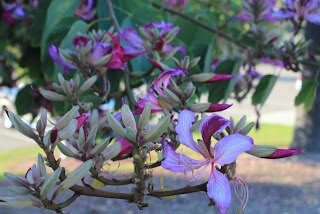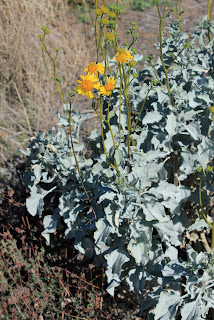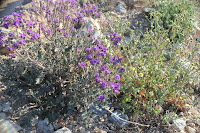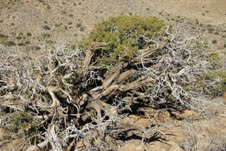Pollan, Michael. 2002. The Botany of Desire. Random House, Inc., New York; p. 113-179.
Reading between the lines is important - you can then understand the hidden (or not so hidden) messages in words such as 'intoxication' (Pollan, 114) or 'therapist'.
Personally, I cannot understand Pollan's relation between poison and desire. Coming from a small town where essentially anything goes, many a Friday night has gone by where my neighbourhood was silently smothered by the scent on the breeze. Knowing its 'forbidden' status does not make me want to pursue it - in fact having to be exposed to it irritates me to no end - I can't understand why anyone one would desire it.
Knowing the context of this week's reading, I'm sure you can all guess what is in the back of the RCMP truck (the worst part of this was that it was parked in front of the church...).
Furthermore, this chapter just destroyed fairytales for me (thanks a lot Pollan). This is one situation in which I believe that ignorance may have been bliss, and it put a whole new perspective on the saying "flying high", but really, witches had special 'flying penis's' of their own kind (Pollan 119).
Sunday, March 25, 2012
Sunday, March 18, 2012
Week 8: Additional Pictures
Week 8: Dessert in the Desert
Nabhan, G.P. 1990. Gathering the desert. University of Arizona Press, p. 3-19.
This reading truly intrigued me. I've been down to the deserts in Southern California (Death Valley) a few times, but never did I imagine that the plants surrounding me were such big sources of food or cures - the most I got from the desert were cacti through my shoes (ouch!).
Sorry, I couldn't find the picture of me with a cactus in my leg, but here's the lovely barren/desert view of Drumheller anyway ( PS: I'm the little one in hot-pink pants).
It's sad to think that the traditional uses of the plants is becoming vestigial (like our appendixes!) in today's society - they're all still around us, but we won't know how to use 'em. Truthfully, I'll admit that the only plants I know how to use as a cure are garlic, onions, and sage (and those are very widely used as cures).
NATURE'S CROP CIRCLES!!! Now this part of the paper I really liked, and upon looking up images of 'King Clone' it really does look like an eerie desert crop circle!

It's crazy to see how they form rings. When I thought about it I thought that they would form multiple rings, but apparently they grow by allelopathic growth. This causes them to release chemicals inhibiting growth of any other plants surrounding them - essentially meaning that the creosote bush will keep on growing in an outward ring because they cannot grow where they have already grown.
***
MORE OF MY ESSAY:
This reading truly intrigued me. I've been down to the deserts in Southern California (Death Valley) a few times, but never did I imagine that the plants surrounding me were such big sources of food or cures - the most I got from the desert were cacti through my shoes (ouch!).
Sorry, I couldn't find the picture of me with a cactus in my leg, but here's the lovely barren/desert view of Drumheller anyway ( PS: I'm the little one in hot-pink pants).
It's sad to think that the traditional uses of the plants is becoming vestigial (like our appendixes!) in today's society - they're all still around us, but we won't know how to use 'em. Truthfully, I'll admit that the only plants I know how to use as a cure are garlic, onions, and sage (and those are very widely used as cures).
NATURE'S CROP CIRCLES!!! Now this part of the paper I really liked, and upon looking up images of 'King Clone' it really does look like an eerie desert crop circle!

It's crazy to see how they form rings. When I thought about it I thought that they would form multiple rings, but apparently they grow by allelopathic growth. This causes them to release chemicals inhibiting growth of any other plants surrounding them - essentially meaning that the creosote bush will keep on growing in an outward ring because they cannot grow where they have already grown.
***
MORE OF MY ESSAY:
The Peculiar case in which the fruit is the ‘prize’
“Isn’t ‘Bard on the Beach’ great?” I ask as the car is stuck in Vancouver’s evening traffic.
“Not bad, not bad, “ is my uncle’s reply, “Speaking of Shakespeare, do you know where potatoes originated?”
Transitions like this always take me aback. “Um, Ireland?”
“Idiot.”
Green mountains that reach like towers towards the blue skies, with white clouds
surrounding the peaks like swirling snakes. Potatoes – Solanum tuberosum – the tuber
known to all, originated in the lower Andes of South America some 10,000 years ago.
Their introduction to Europe – and subsequent spread to other parts of the globe – was
only some 400 years ago during the Spanish conquests of the 16th century.
All my life I have been ignorant of these facts, and this ignorance has been quite
limiting. I have been eating maybe two or three varieties, imagine my surprise at finding
out that there are one hundred commonly produced varieties worldwide, and over 4000
varieties in total!
The late spring soil is still a bit hard as I work with a pitchfork to make even rows
and mounds in the planters. The sun is shining down, getting hotter by the day, and the
spuds in the bucket next to me have begun sprouting. Taking a knife I carefully cut the
spuds in half, making sure each half has a sprout or two. I push each spud into the
shallow trenches, spacing them by six inches, and covering them with a mound of soil.
After thoroughly saturating the planters there’s nothing to do but wait.
It doesn’t take long for small, dark green leaves to poke through the tough soil.
Once the sunlight hits the leaves it almost seems as though their growth is a race. Just
over a month after planting them a canopy of green covers the ground like a thick carpet.
These potatoes are up to my knee – I smile, remembering the first time had
planted potatoes. Back then the only planter available was in the darkest corner of the
yard, and what I got for all my hard work was a wild tangled mess taller than me in
height!
Spring passes, summer wears on, and the last petal drop to the dusty soil below.
“Hey dad, the potato plants have little green things that look like tomatoes…”
“Don’t eat those!!”
This turns out to be good advice. For even though the potato and tomato are of
the same family, the small ‘tomato-like’ fruit of the potato is full of the toxin solanine.
“The fact that there are fruits means that we can soon harvest the potatoes. Just make
sure to add more soil to the planter, don’t let the potatoes poke through.”
“Okay.”
As with the fruit, if the growing potatoes come in contact with sunlight they will
photosynthesize and simultaneously begin producing solanine.
(only about half-way done, but some insightful comments might be nice)
Saturday, March 17, 2012
Introduction to my essay!
“Isn’t ‘Bard on the Beach’ great?,” I ask as the car is stuck in Vancouver’s evening traffic.
“Not bad, not bad, “ is my uncle’s reply, “Speaking of Shakespeare, do you know where potatoes originated?”
Transitions like this always take me aback. “Um, Ireland?”
“Idiot.”
***
- the sad (or maybe funny) thing about this conversation is that it actually happened...
Sunday, March 11, 2012
Week 7: Johnny Appleseed Song
Seriously, Disney could not have made it more 'cheesy' - I think the story Pollan tells would have made for a much more entertaining movie!
"The barefoot crank died a wealthy man (Pollan 9)".
Week 7: APPLES
Pollan, Michael. 2002. The Botany of Desire. Random House, Inc., New York; p. 3-58.
Anyway, continuing on with Pollan's chapter on the apple.
More than the topic of the apple themselves I found the history, and politics behind 'changing' the history, of 'Johnny Appleseed' really interesting. Besides the fact that the only times I've ever heard the name 'Johnny Appleseed' was while volunteering at a camp and kids had to sing the song before getting food, I've never given much thought to the story behind it.
Just as Pollan mentions the chapter, the story most people know - the story I know - is that he planted the apples as a food source; but the story Pollan traces is so much more interesting than that! Maybe its just me being naive, but I would have never thought that the apples were primarily used for apple cider.
It tickled me pink reading about how, during the years of Prohibition, the 'apple' was essentially a thing over which the people warred over. That said, John Chapman's (Appleseed) biography is a far cry from the Disney-fied story (which I don't know about the rest of you, but I didn't even know there was a movie).
"Sweetness is a desire that starts on the tongue with the sense of taste (Pollan p.17)."
Maybe I'm just a brat because I plant a lot of fruits and veggies in my yard, but whenever Pollan mentions the details in which plants (and I guess meats too) are changed to become supermarket approved, I really start to think about those foods. In terms of apples, I've never realized this before - but after dwelling on it - I realize that, unless I'm forced to, I don't eat fruit bought from the supermarket.
I pig out on fruits during the summer and fall, but rarely do I eat any fruit during the rest of the year (I'm actually surprised I don't have scurvy) - and I say this while eating chocolate rather than the fruit that's in the fruit bowl. I know that what's in the store is in a way a symbol of our control - the perfect, uniform sizes, the skins waxed and without blemish - but honestly, the only apples I eat are full of worm holes (so I am never without a knife when eating apples), and have bruises (and really, why wouldn't you eat the bruised part? its like eating apple sauce without the effort of having to make it).
Anyway, continuing on with Pollan's chapter on the apple.
More than the topic of the apple themselves I found the history, and politics behind 'changing' the history, of 'Johnny Appleseed' really interesting. Besides the fact that the only times I've ever heard the name 'Johnny Appleseed' was while volunteering at a camp and kids had to sing the song before getting food, I've never given much thought to the story behind it.
Just as Pollan mentions the chapter, the story most people know - the story I know - is that he planted the apples as a food source; but the story Pollan traces is so much more interesting than that! Maybe its just me being naive, but I would have never thought that the apples were primarily used for apple cider.
It tickled me pink reading about how, during the years of Prohibition, the 'apple' was essentially a thing over which the people warred over. That said, John Chapman's (Appleseed) biography is a far cry from the Disney-fied story (which I don't know about the rest of you, but I didn't even know there was a movie).
"Sweetness is a desire that starts on the tongue with the sense of taste (Pollan p.17)."
Maybe I'm just a brat because I plant a lot of fruits and veggies in my yard, but whenever Pollan mentions the details in which plants (and I guess meats too) are changed to become supermarket approved, I really start to think about those foods. In terms of apples, I've never realized this before - but after dwelling on it - I realize that, unless I'm forced to, I don't eat fruit bought from the supermarket.
I pig out on fruits during the summer and fall, but rarely do I eat any fruit during the rest of the year (I'm actually surprised I don't have scurvy) - and I say this while eating chocolate rather than the fruit that's in the fruit bowl. I know that what's in the store is in a way a symbol of our control - the perfect, uniform sizes, the skins waxed and without blemish - but honestly, the only apples I eat are full of worm holes (so I am never without a knife when eating apples), and have bruises (and really, why wouldn't you eat the bruised part? its like eating apple sauce without the effort of having to make it).
Subscribe to:
Comments (Atom)








































